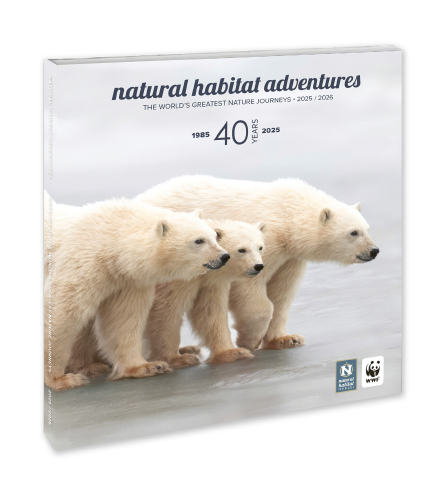Weather & Climate in Nepal & Bhutan
Nepal
Nepal’s weather, which is relatively predictable, can be broken down into four climatic seasons: spring (March–May), monsoon/summer (June–August), autumn (September–November), and winter (December–February). Winter mornings and evenings can be quite cold in Kathmandu with temperatures ranging from 30°F to 40°F. You will need to dress in layers, including a jacket and/or sweater. Fog can be expected until the air warms enough around midmorning to make way for clear skies. Chitwan National Park averages between 10 and 15 degrees warmer than Kathmandu, and temperatures in the middle of the day can reach well above 80°F. Nevertheless, layers are needed for wildlife drives in the cool morning hours when average temperatures are typically around 40°F to 50°F. During the months of February through April, Nepal sees the occasional rain shower, with amounts averaging less than 1 inch.
Average Temperatures
(in Fahrenheit)
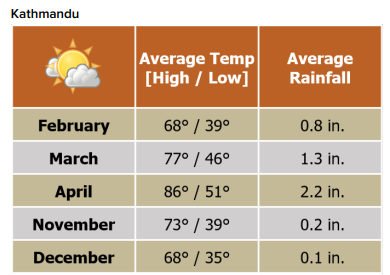

Bhutan
Bhutan encompasses a wide range of climates, from the hot and humid jungles of the southern foothills to the frigid, snowcapped peaks in the north. Broadly speaking, like Nepal, the country’s climate can be divided into four seasons: spring, summer/monsoon, autumn and winter.
Winter lasts from December to February. Days during the trip will generally be cool, but pleasant, with clear skies and sunshine. Daytime temperatures usually range between 50°F and 70°F, and nighttime lows will be between 30°F and 50°F. Although the country expanse is quite small, temperatures can drop dramatically with increases in altitude. At 8,000 feet (Paro and Thimphu), expect it to be cool in the mornings (a sweater and jacket will be handy) and warmer in the afternoons. At lower elevations, such as Punakha (4,000 feet), temperatures tend to be 10–20 degrees warmer.
Also note that as the sun sets at the end of the day, temperatures can drop very quickly. You will want to be prepared with clothing that you can be layered. Then you can add or remove clothing as temperatures necessitate. During the months of February through April, Bhutan sees the occasional rain shower, with amounts averaging less than 1 inch.
Average Temperatures
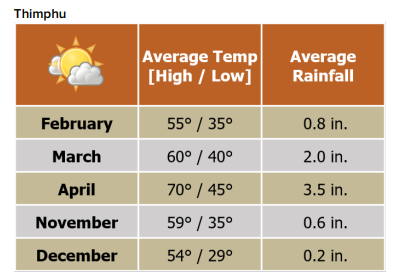
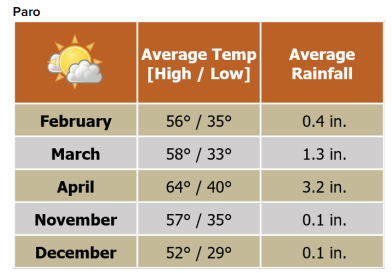
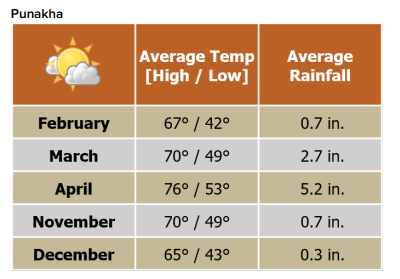
Browse Our South Asia Adventures
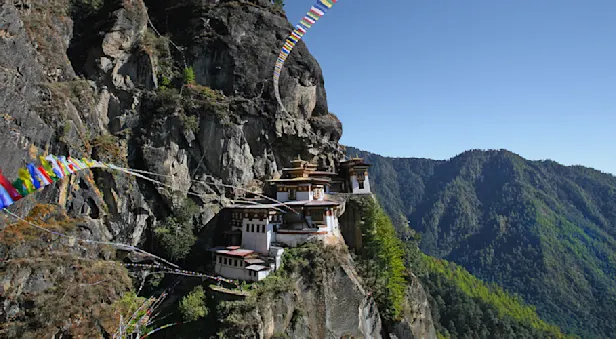
Wild & Ancient Himalaya: Nepal & Bhutan
Explore mountain heights and jungle lowlands on this soulful journey through the cultural and wildlife treasures of two neighboring Himalayan nations—including rhino tracking in Chitwan National Park.




















